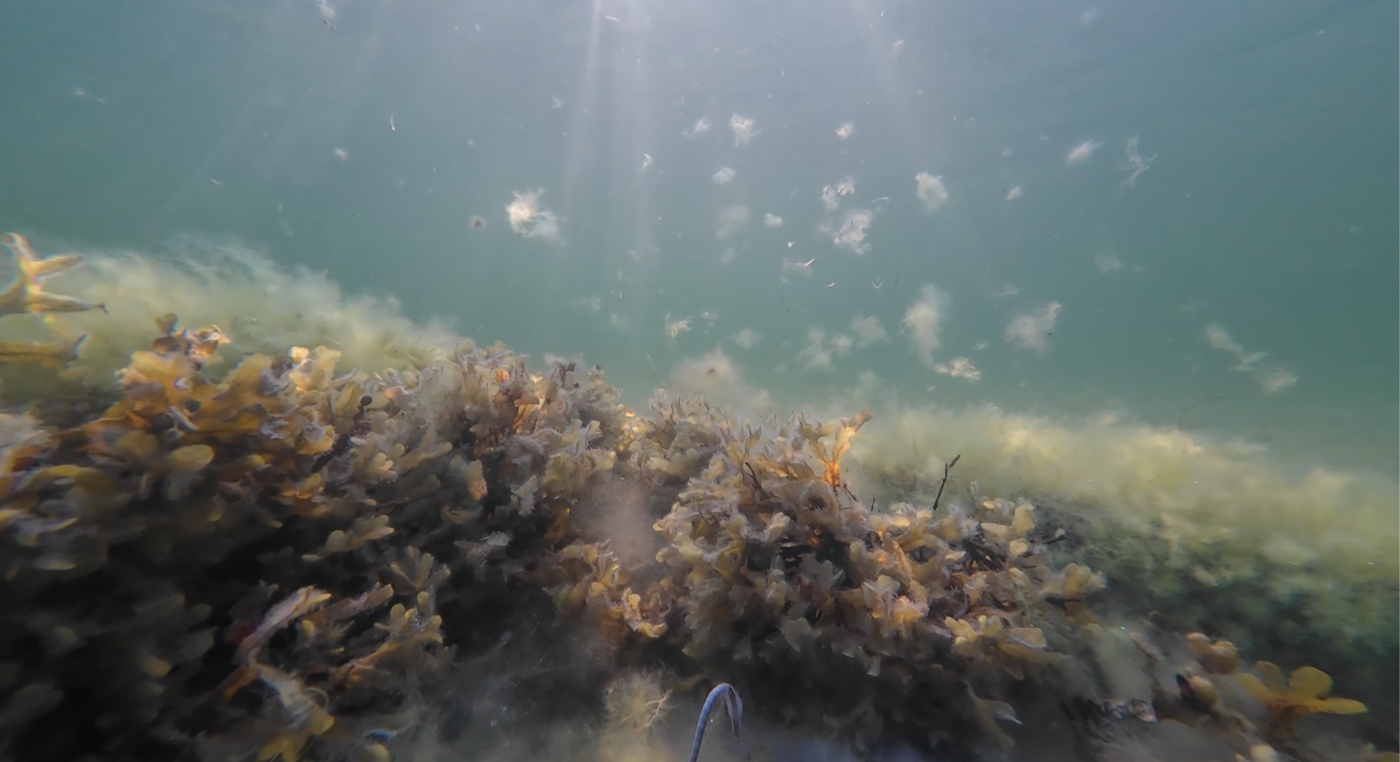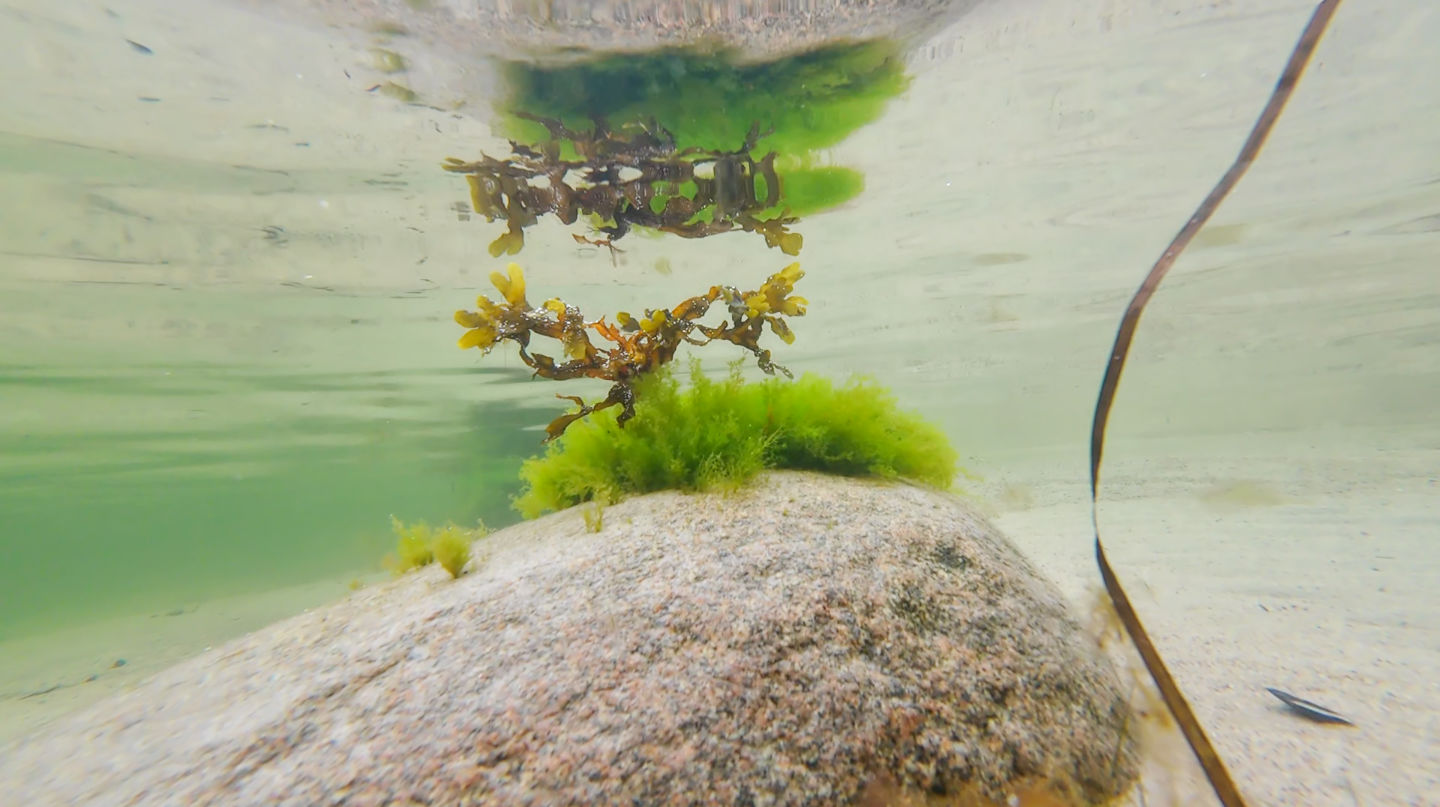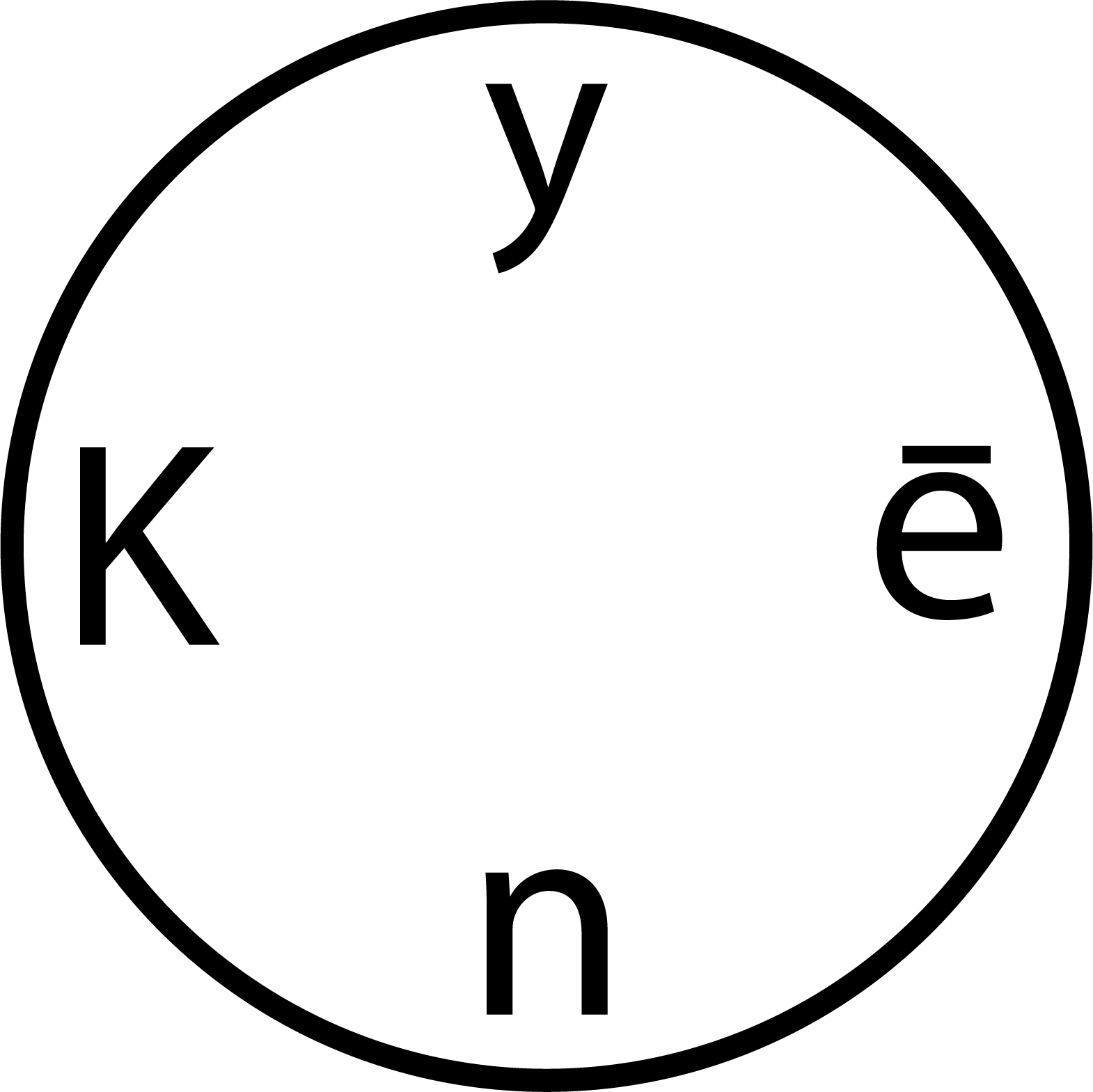Marie Schoberleitner
participation in Habitare Materials 2024
Marie Schoberleitner's work engages with materiality and temporality, creating immersive environments that explore the resilience of living systems amidst environmental and social change.
ÖRES Septiembre 2024 :
observing - collecting - sorting - fragmenting
![]()
![]()
![]()
![]() © Marie Schoberleitner
© Marie Schoberleitner
Algae and seaweed are found in abundance on the island of Örö and cover the
transition zone between water and land. In some places on the beach there were large piles of seaweed, which gradually rotted and decomposed into smaller and smaller pieces, eventually providing nutrients for the neighboring plants on land. On some days, the smell of the seaweed spread across the entire island – sweet, fishy, tangy, taking up all the space.
![]()
![]()
![]() © Marie Schoberleitner
© Marie Schoberleitner
The first phase of my process was characterized by getting to know the diversity of the algae present. Distinguishing the different species from their neighbors required a lot of observation, finding out where the algae grow in abundance, at what times of day they are best collected, how they react to the weather, how they behave when they dry and so on. During this phase, I explored the coast of the island, took a very close look and selected four seaweed species that I would like to continue working with because I am
fascinated by their materiality, their shape or their behavior: Gutweed, Cladophora, Forkweed and Bladderwrack. I find myself drying, sorting, crushing, fragmenting,pulverizing the individual algae as part of the dialogue with the algae species.
![]()
At the same time, I used an underwater camera to explore the shallow water around the island, delving deeper into the dialog with the algae, trying to get to know their habitat better. Using the underwater camera gave me important insights into how the seaweed interacts with other creatures like jellyfish and the sometimes symbiotic relationships underwater. Being in the cool water, wading through the densely overgrown seabed, never knowing what is hiding in the tufts of kelp was a bit scary, but also made me very curious about the deeper areas of the algies habitats that are not so easily accessible,
that are colonized by other species, hidden deep beneath the glittering surface of the Baltic Sea.
![]()
![]() © Marie Schoberleitner
© Marie Schoberleitner
Marie Schoberleitner's work engages with materiality and temporality, creating immersive environments that explore the resilience of living systems amidst environmental and social change.
ÖRES Septiembre 2024 :
observing - collecting - sorting - fragmenting
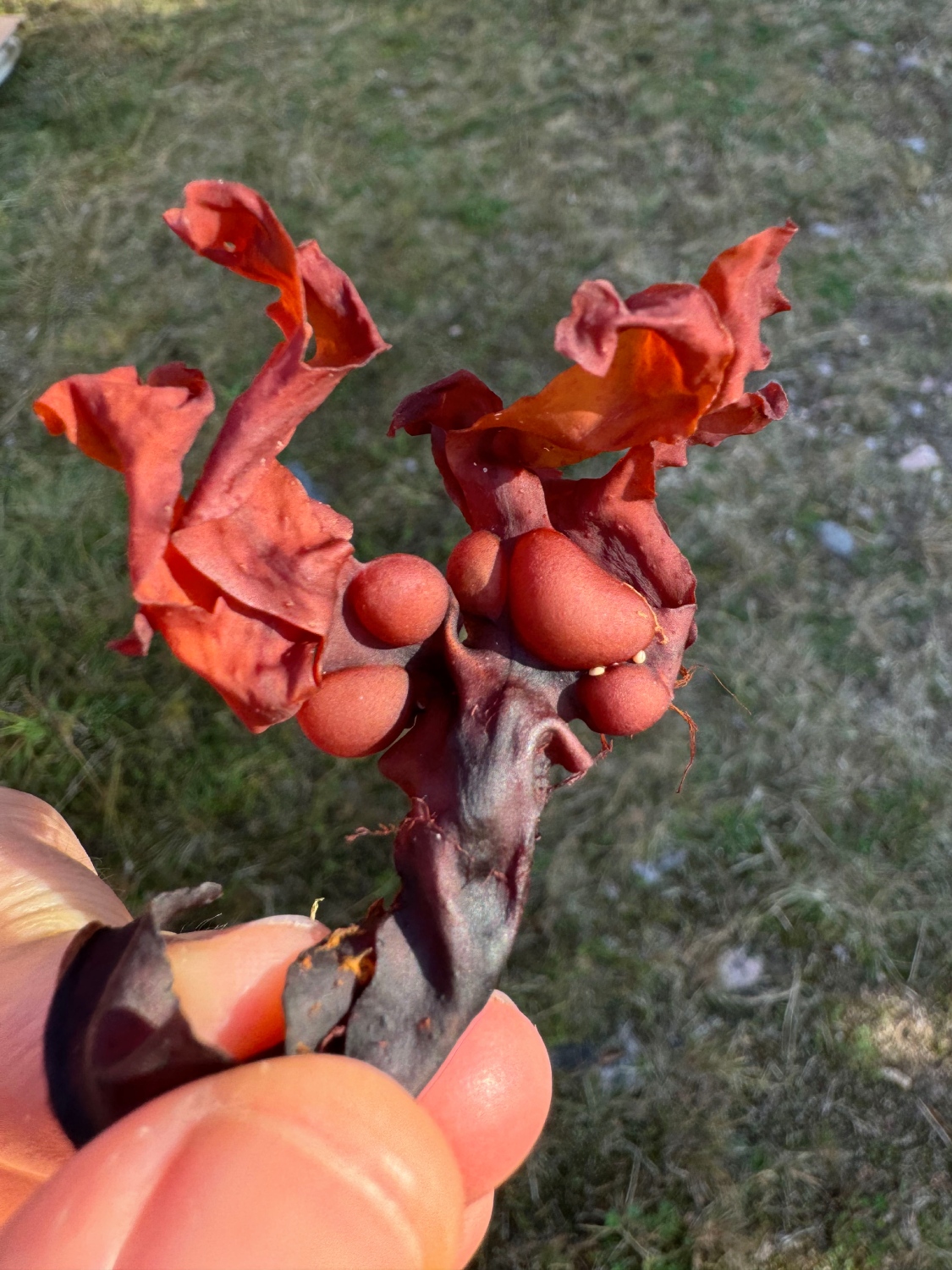

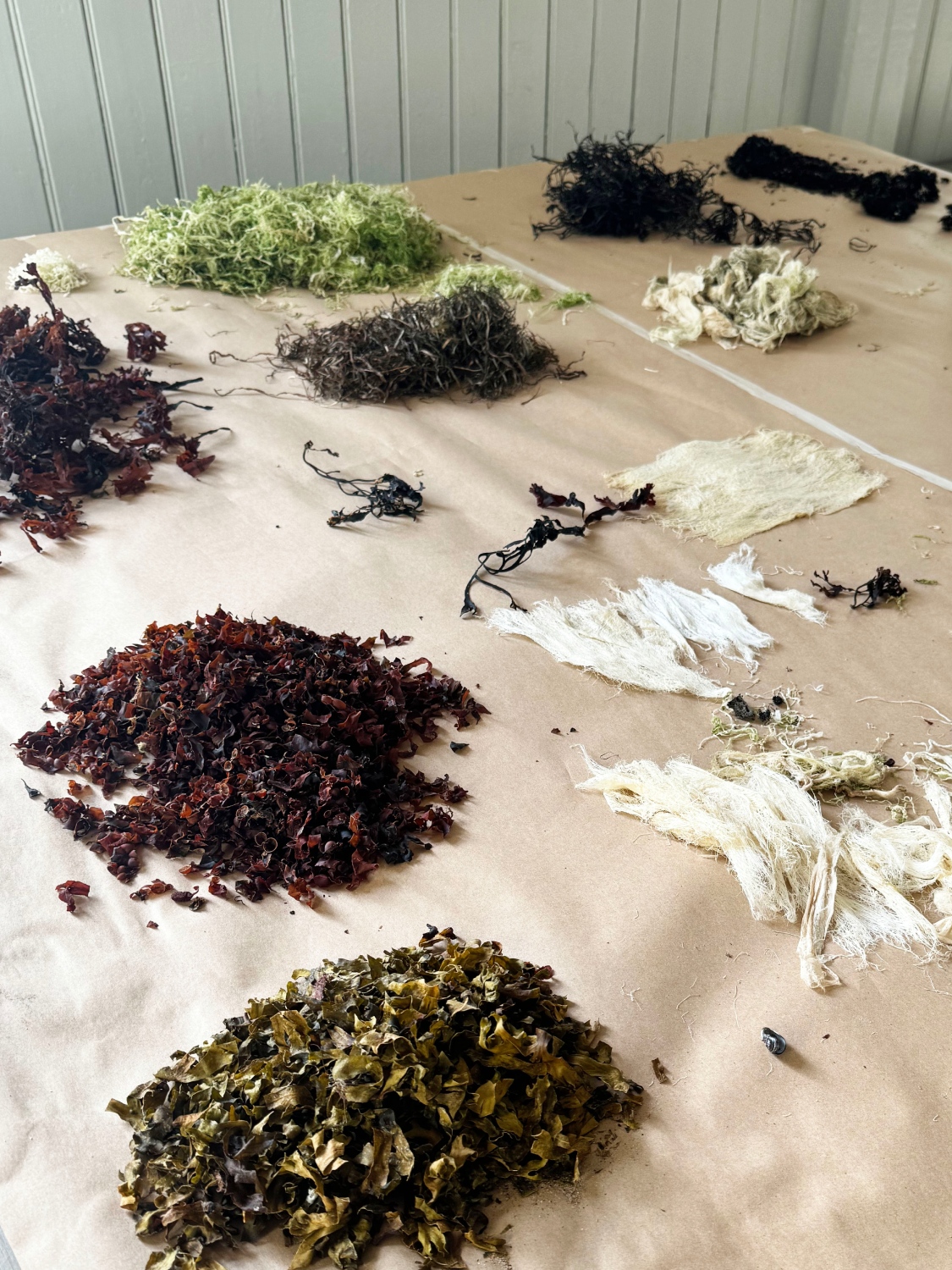

Algae and seaweed are found in abundance on the island of Örö and cover the
transition zone between water and land. In some places on the beach there were large piles of seaweed, which gradually rotted and decomposed into smaller and smaller pieces, eventually providing nutrients for the neighboring plants on land. On some days, the smell of the seaweed spread across the entire island – sweet, fishy, tangy, taking up all the space.
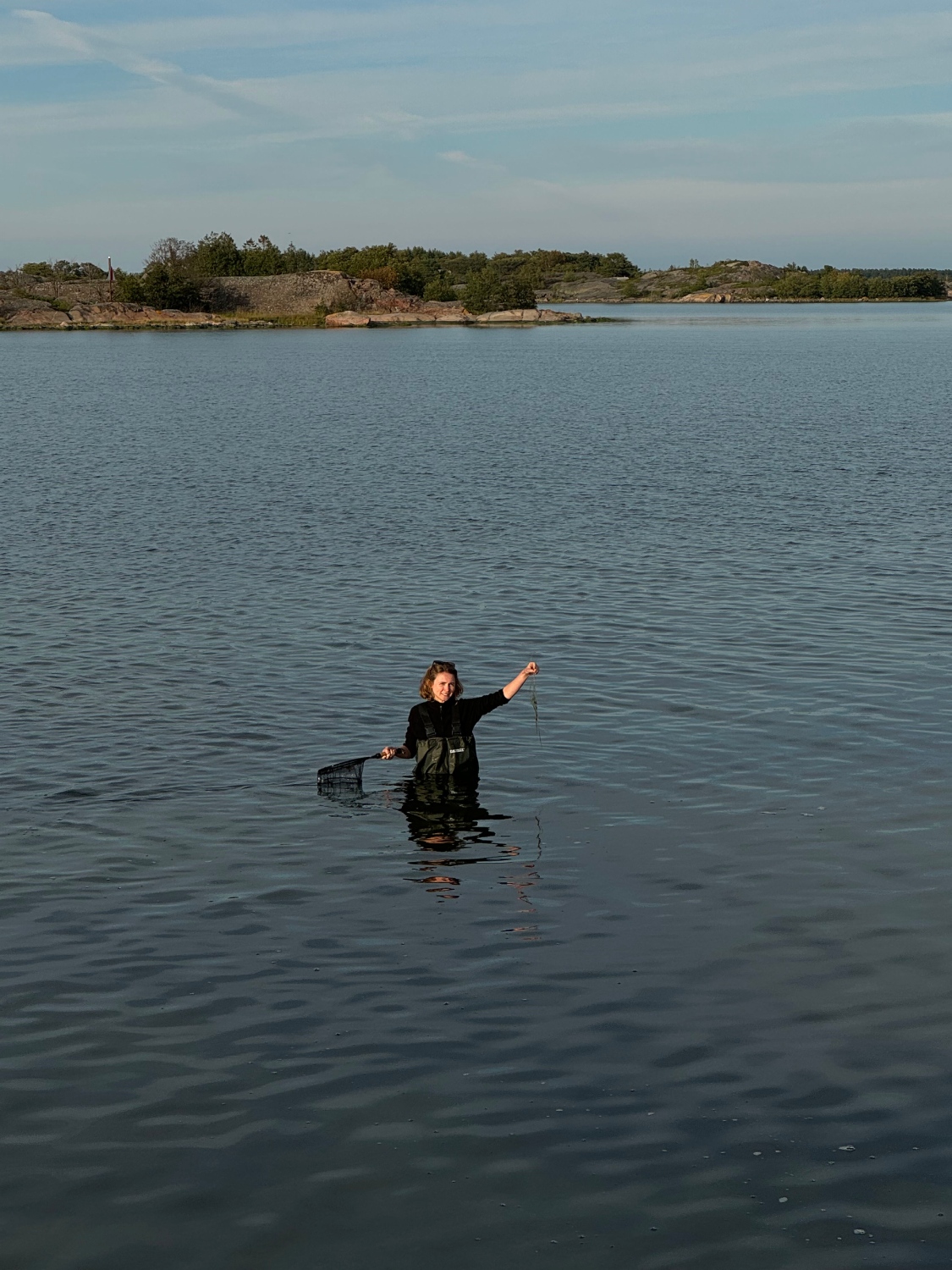
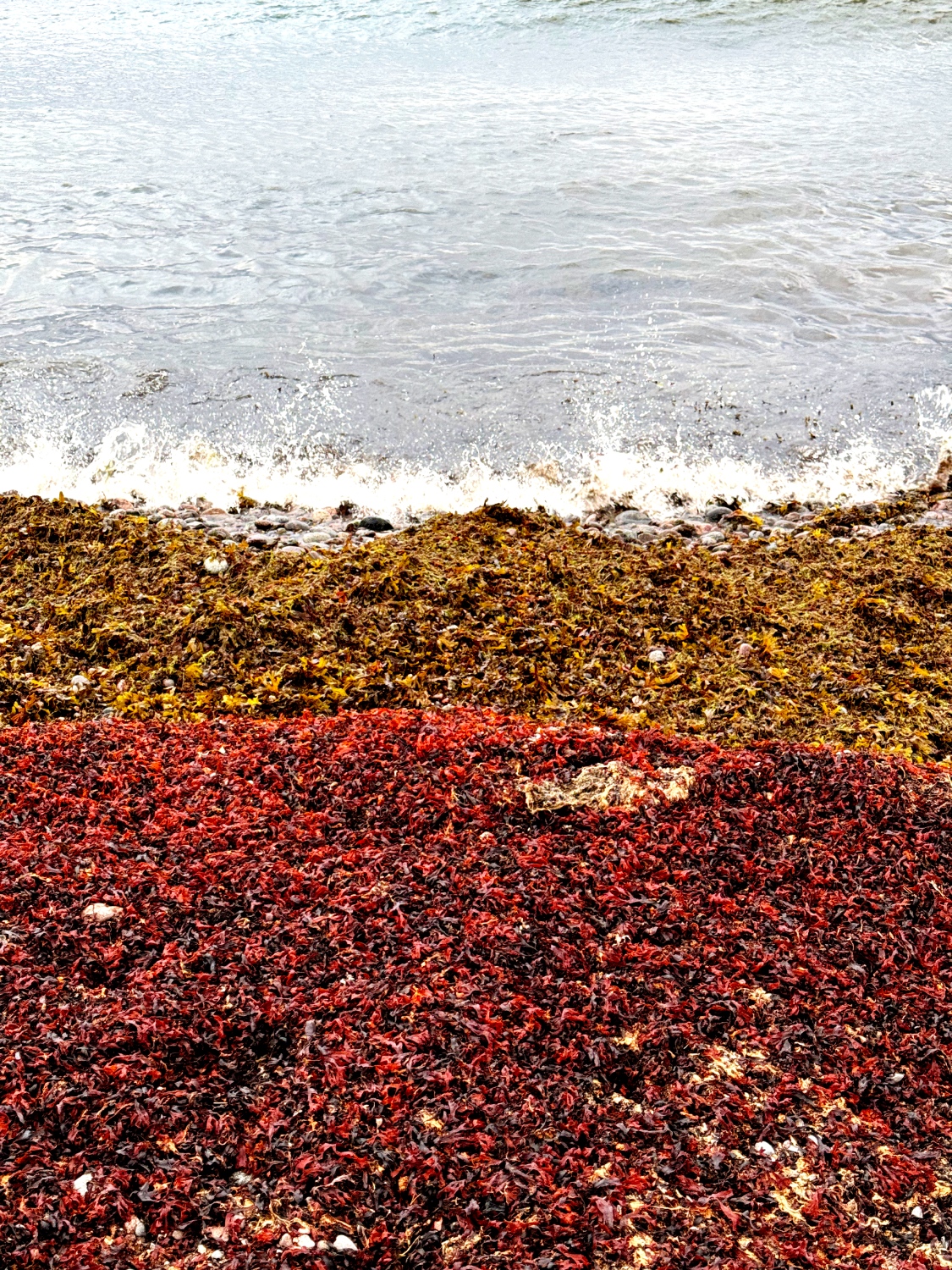
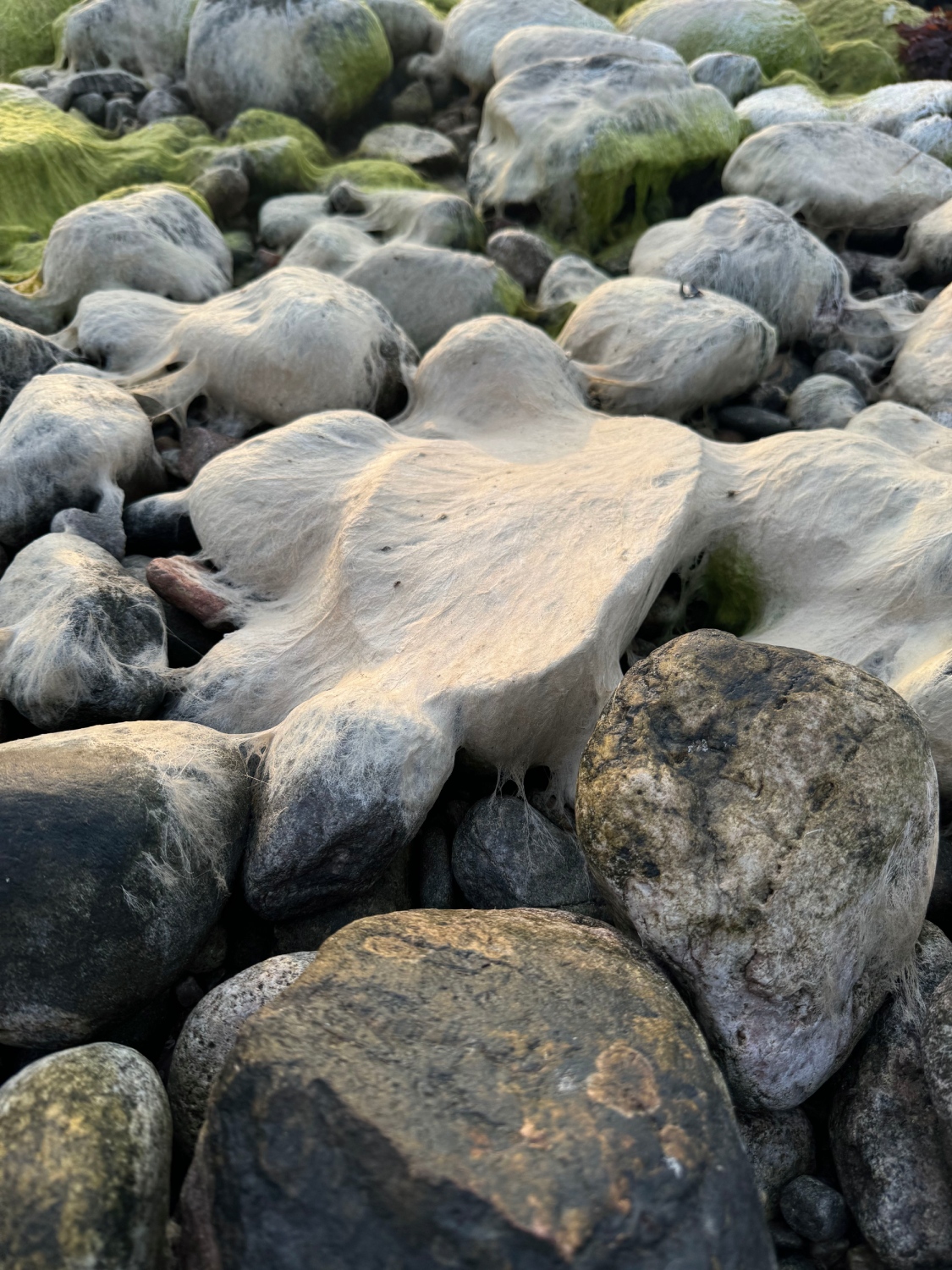
The first phase of my process was characterized by getting to know the diversity of the algae present. Distinguishing the different species from their neighbors required a lot of observation, finding out where the algae grow in abundance, at what times of day they are best collected, how they react to the weather, how they behave when they dry and so on. During this phase, I explored the coast of the island, took a very close look and selected four seaweed species that I would like to continue working with because I am
fascinated by their materiality, their shape or their behavior: Gutweed, Cladophora, Forkweed and Bladderwrack. I find myself drying, sorting, crushing, fragmenting,pulverizing the individual algae as part of the dialogue with the algae species.
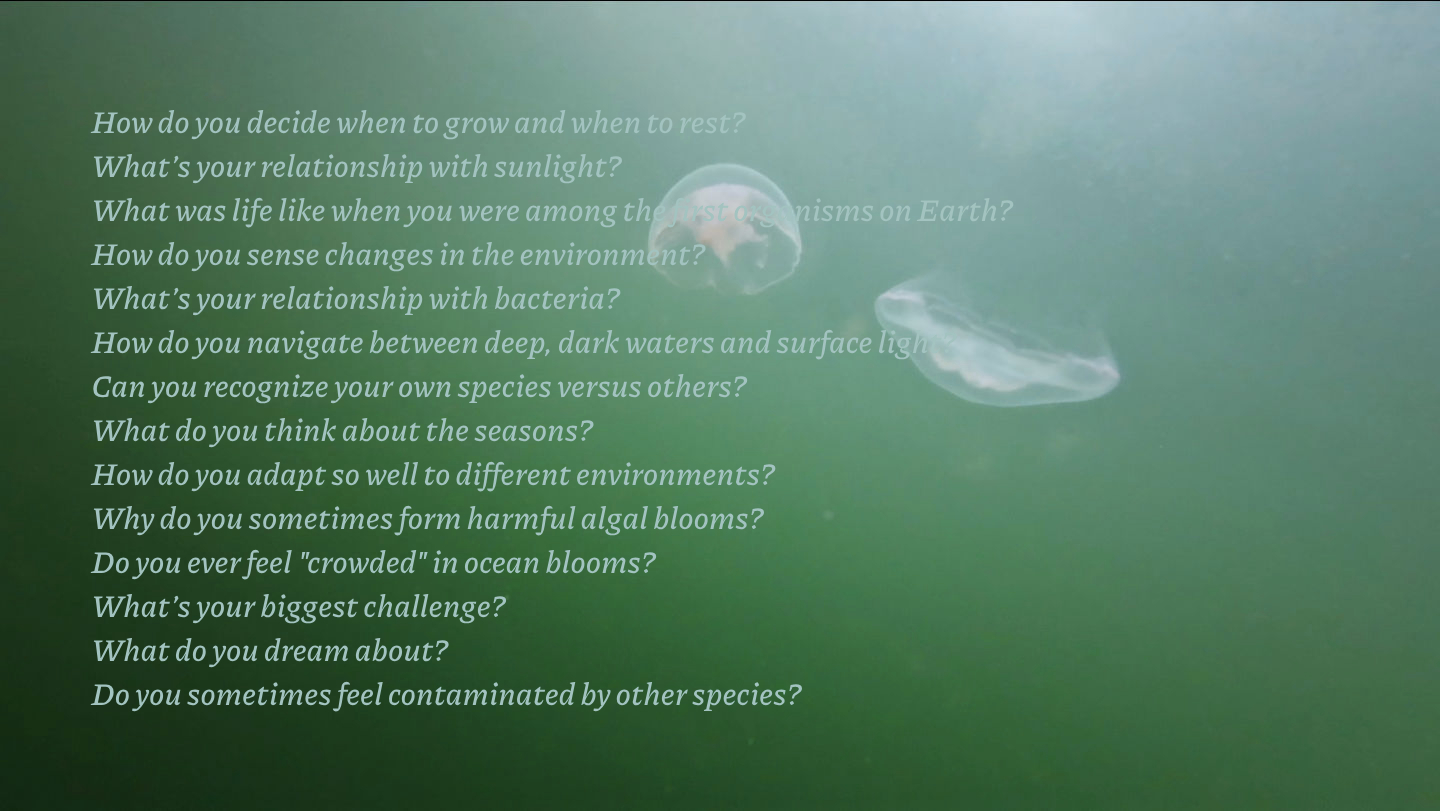
At the same time, I used an underwater camera to explore the shallow water around the island, delving deeper into the dialog with the algae, trying to get to know their habitat better. Using the underwater camera gave me important insights into how the seaweed interacts with other creatures like jellyfish and the sometimes symbiotic relationships underwater. Being in the cool water, wading through the densely overgrown seabed, never knowing what is hiding in the tufts of kelp was a bit scary, but also made me very curious about the deeper areas of the algies habitats that are not so easily accessible,
that are colonized by other species, hidden deep beneath the glittering surface of the Baltic Sea.
